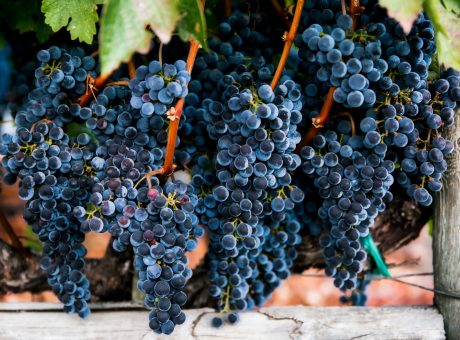Prost! A Toast to Austrian Wines
“Austria makes wine?” It’s the reaction I got from multiple friends I invited over recently for an Austrian wine tasting. “Of course! For centuries.” I replied. “AND really nice ones I think you’ll enjoy. The choices will surprise you.”
Truth is, I too didn’t know Austria produced wine until I studied wine at the famous German wine school in Koblenz years ago. Before then, my knowledge of Austria consisted mostly of beautiful photos of ski slopes and “The Sound of Music.” While in school, I learned how incredible Austrian wine was, and how versatile and friendly it was with so many foods.
Back to the wine tasting party… I planned the evening with a variety of food choices and a nice selection of wines. As always, I started the night by telling everyone a little about the country or region. In Austria, the grapes are grown on the eastern side of the country where there is a large variation in climate and terroir (soil), which produces a fabulous range of wine styles. Because of this diverse terrain and a climate that is warmer during the day and cooler at night, the wines produced are fruit-forward and acidic with dramatic aromas. The whites range from light and fresh to some truly elegant choices, and of course, sweet dessert wines.
There are three white grape varieties grown only in Austria: Gruner Veltliner, Zierfandler, and Rotgipfler. The region also grows more classic, well-known varieties seen internationally, including Reisling, Sauvignon Blanc, and Chardonnay. Below are some of the more popular whites:
- Gruner Veltliner – the most popular in the region and versatile for food pairing. It’s great served with most appetizers, vegetarian dishes, strong cheeses, fish and chicken dishes, spicy Asian or Indian cuisine. It can also go just as well with heavier dishes and red meat.
- Welschriesling – a nifty little grape that wears many hats in wine-making styles. It does well in different quality levels: sweet, sparkling, or table wine. You’ll find it fruity and dry. It can also be used to make incredible sweet wines, including the noble rot dessert wines.
- Reisling – an excellent, food friendly wine. You’ll find it goes well with a wide range of foods – from Thai to American Barbeque.
- Muller–Thurgau – a great varietal among young wines, similar to Muscat.
- Weissburgunder – a white, subtly aromatic, dry wine, also known as Pinot Blanc.
While the majority of plantings are white, the reds cannot be underestimated. Austria also makes some spectacular reds, which are seeing an increase in popularity lately. Some of the most well-known grapes include:
- Zweigelt – the most abundant red grape in the area. It produces a full-bodied wine, violet in color with smooth tannins.
- Blaufrankisch – a grape with aging potential that produces deep colored wines with some underlying cherry tones and prominent tannins.
- Blauer Porrtugiser – this grape produces a lighter colored red wine that matures quickly. Rich and nice on the palate.
- Blauberger – a deeply-colored varietal with soft berry aromas and velvety palate.
- St. Laurant – a grape in the Pinot Noir family, but much richer, deeper and full-bodied with wonderful acidity.
When you’re at the wine shop, you’ll see the DAC designation following the name of Austrian wines. This identifies the growing region and means you have a quality wine as designated by the Austrian government. You may also find the term “Pradikatswein,” meaning a late harvest quality wine that is harvested using ripe to overripe grapes with noble rot. These include Spatlese, Auslese, Beerenauslese, Ausbruch, Trokenbeerenauslese (my favorite!), and Eiswein. They are truly sensational sweet wines!
Enough history, let’s talk food! The night of the party, I offered a variety of foods that had no running theme. I did it on purpose, just to show how versatile these wines are. The edibles included: a tray of very strong cheeses and hearty sausage, spicy sushi rolls, grilled chicken strips, grilled vegetables, grilled marinated beef tenderloins, and spicy Asian appetizers. The wine choices included a variety of Gruner Veltliner bottles, each with their own unique taste and quality, along with several other whites and a few reds. As a bonus, we paired a few sweet wines, typically considered dessert wines with the intense flavors of the cheeses – a beautiful combination. The balance and fruit-forward nature of these wines combined with the freshness and elegant body, compliment most food choices
Shopping advice: I’ll be the first to admit, the names alone can make Austrian wines intimidating. Pronouncing Trokenbeerenauslese takes some practice! But, don’t let that stop you. I’d suggest starting with a Gruner Veltliner, point to it on the shelf at the store or in a restaurant and ask if the person helping you recommends it. You may even find the experts can’t pronounce it either! Give it a try, chances are you will enjoy it and may move on to other Austrian varieties.
My top tip: enjoy your wine and open your palate to new things. Many unknown wines will surprise you!
– Sara Lehman





Leave A Comment